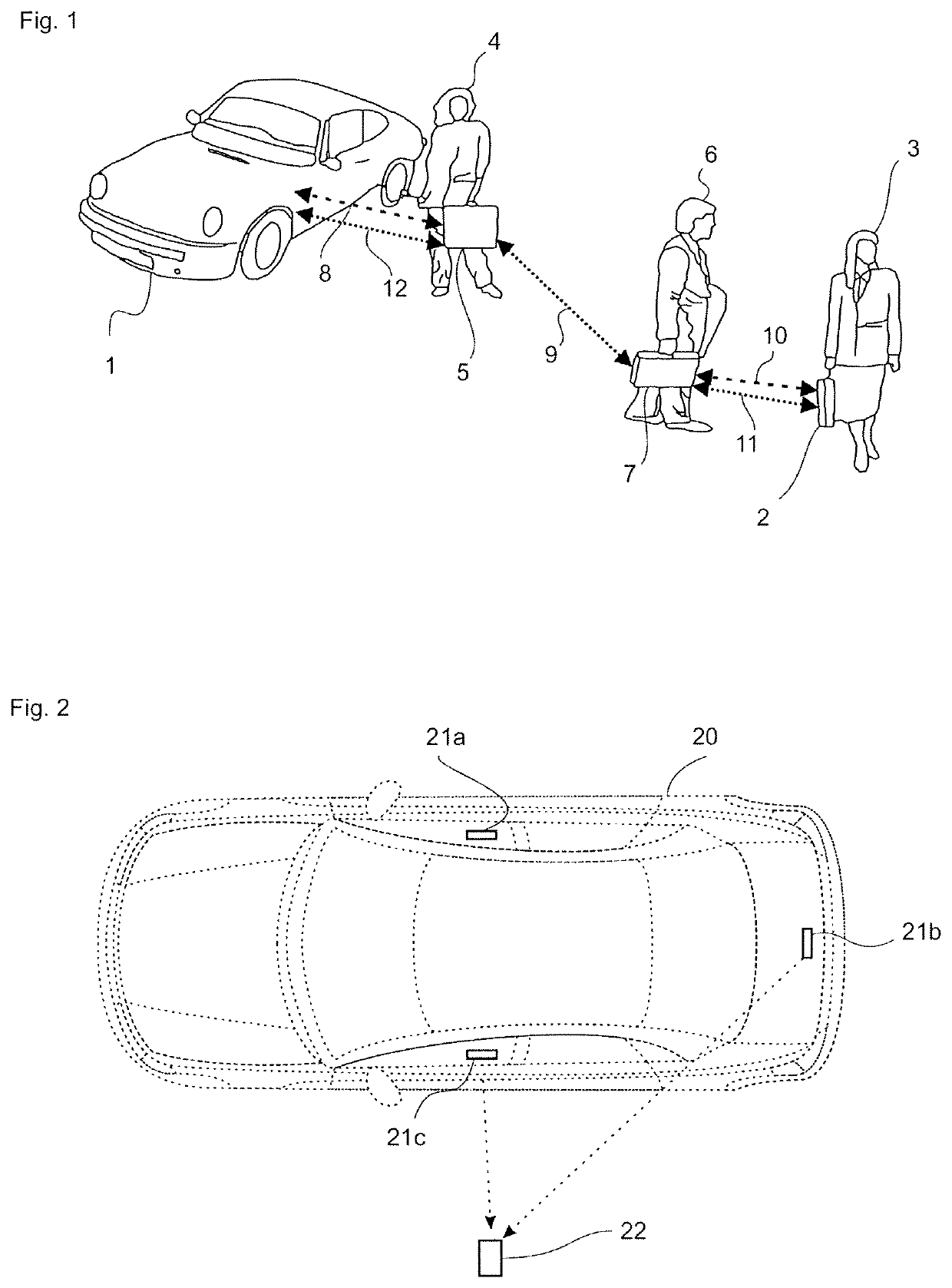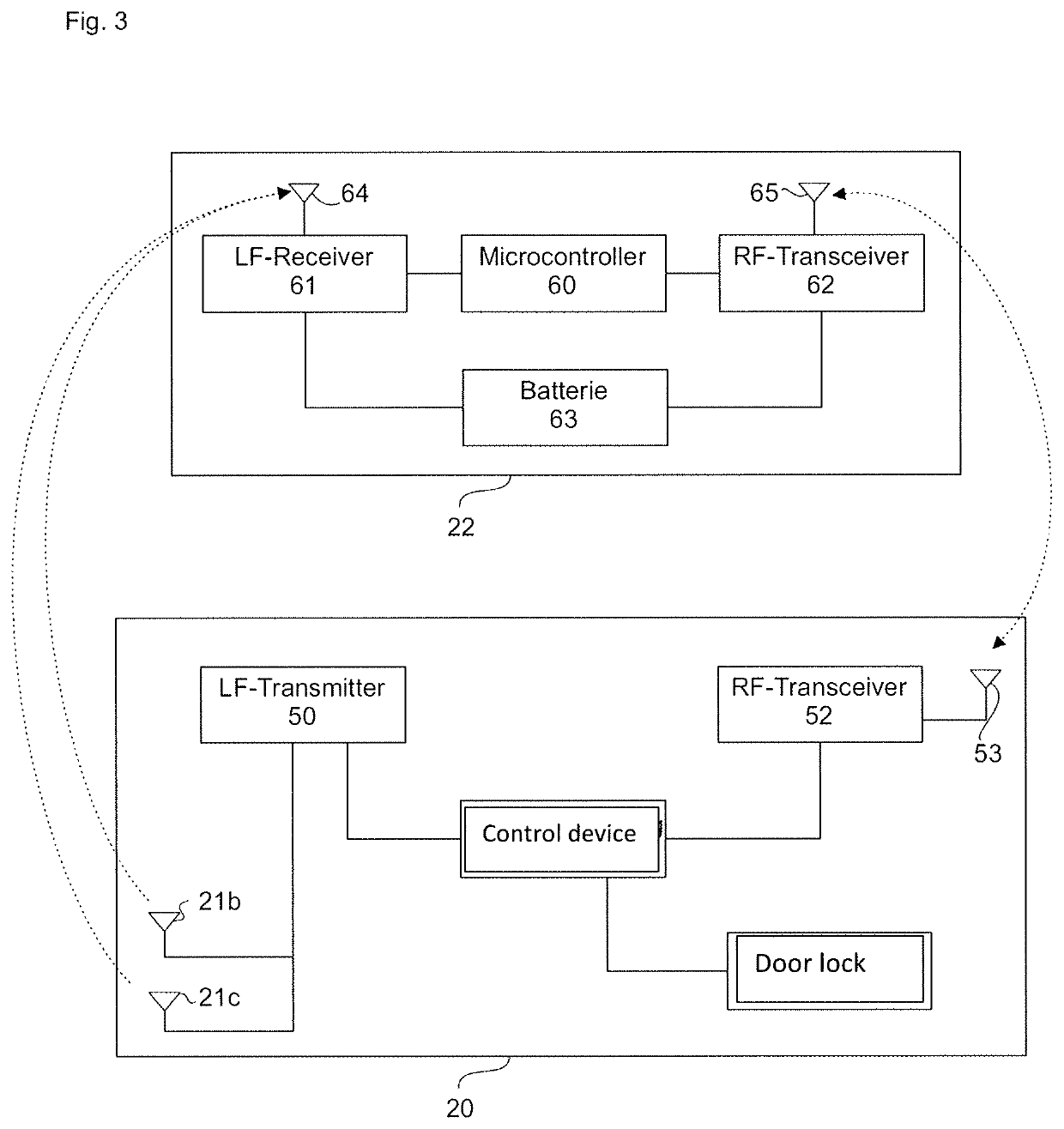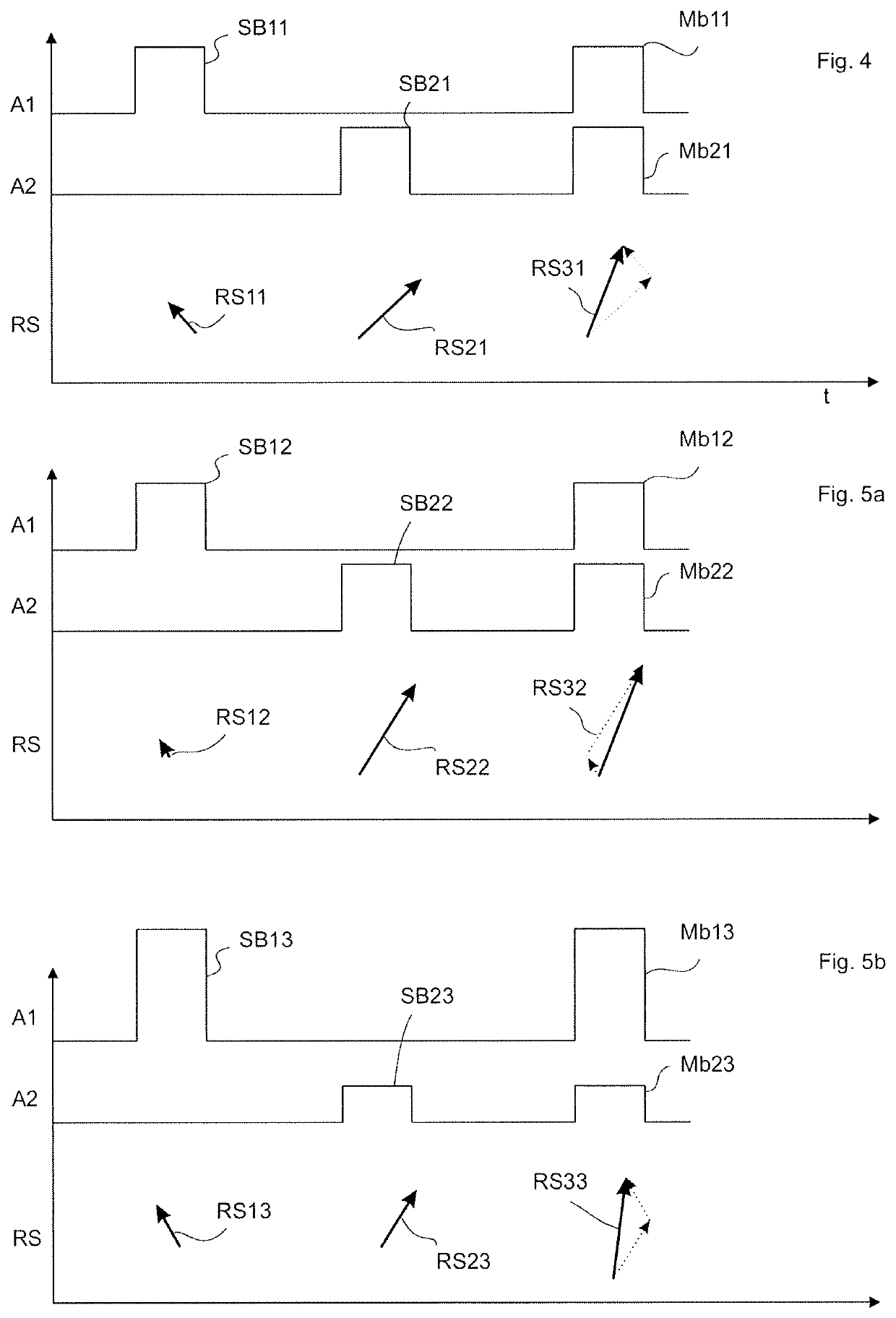Method for controlling access to a motor vehicle
a technology for controlling access and motor vehicles, applied in the direction of instruments, anti-theft devices, diversity/multi-antenna systems, etc., can solve the problems of inability to maintain the orientation of electromagnetic field information, inability to successfully transact access control at this distance, and inability to control the access to a motor vehicle. , to achieve the effect of improving the dynamic of signal detection for plausibility check
- Summary
- Abstract
- Description
- Claims
- Application Information
AI Technical Summary
Benefits of technology
Problems solved by technology
Method used
Image
Examples
Embodiment Construction
[0080]In FIG. 1, the basic flow of a relay-attack (radio-path-extension) between motor vehicle 1 and authorized ID transponder 2 is shown.
[0081]Person 3 carries authorized ID transponder 2 for motor vehicle 1 with him.
[0082]However, person 3 with ID transponder 2 is located outside the reach of the low frequency signals that motor vehicle 1 with associated LF transmission antennas can send out for the start of communication with the ID transponder.
[0083]In this context, the term “low frequency signals” should cover “frequencies in the range of 3-300 KHz”.
[0084]The term “high frequency signals” refers to frequencies in the range of 300 MHz-3 GHz.
[0085]In this example, low frequency signals about 125 KHz was used, whereas the high frequency signals are in the range of 300 MHz.
[0086]Person 4 with device 5 is located in the vicinity of motor vehicle 1 for a radio-path-extension.
[0087]Another person 6 with another station 7 is located for a radio-path-extension in the vicinity of person ...
PUM
 Login to View More
Login to View More Abstract
Description
Claims
Application Information
 Login to View More
Login to View More - R&D
- Intellectual Property
- Life Sciences
- Materials
- Tech Scout
- Unparalleled Data Quality
- Higher Quality Content
- 60% Fewer Hallucinations
Browse by: Latest US Patents, China's latest patents, Technical Efficacy Thesaurus, Application Domain, Technology Topic, Popular Technical Reports.
© 2025 PatSnap. All rights reserved.Legal|Privacy policy|Modern Slavery Act Transparency Statement|Sitemap|About US| Contact US: help@patsnap.com



